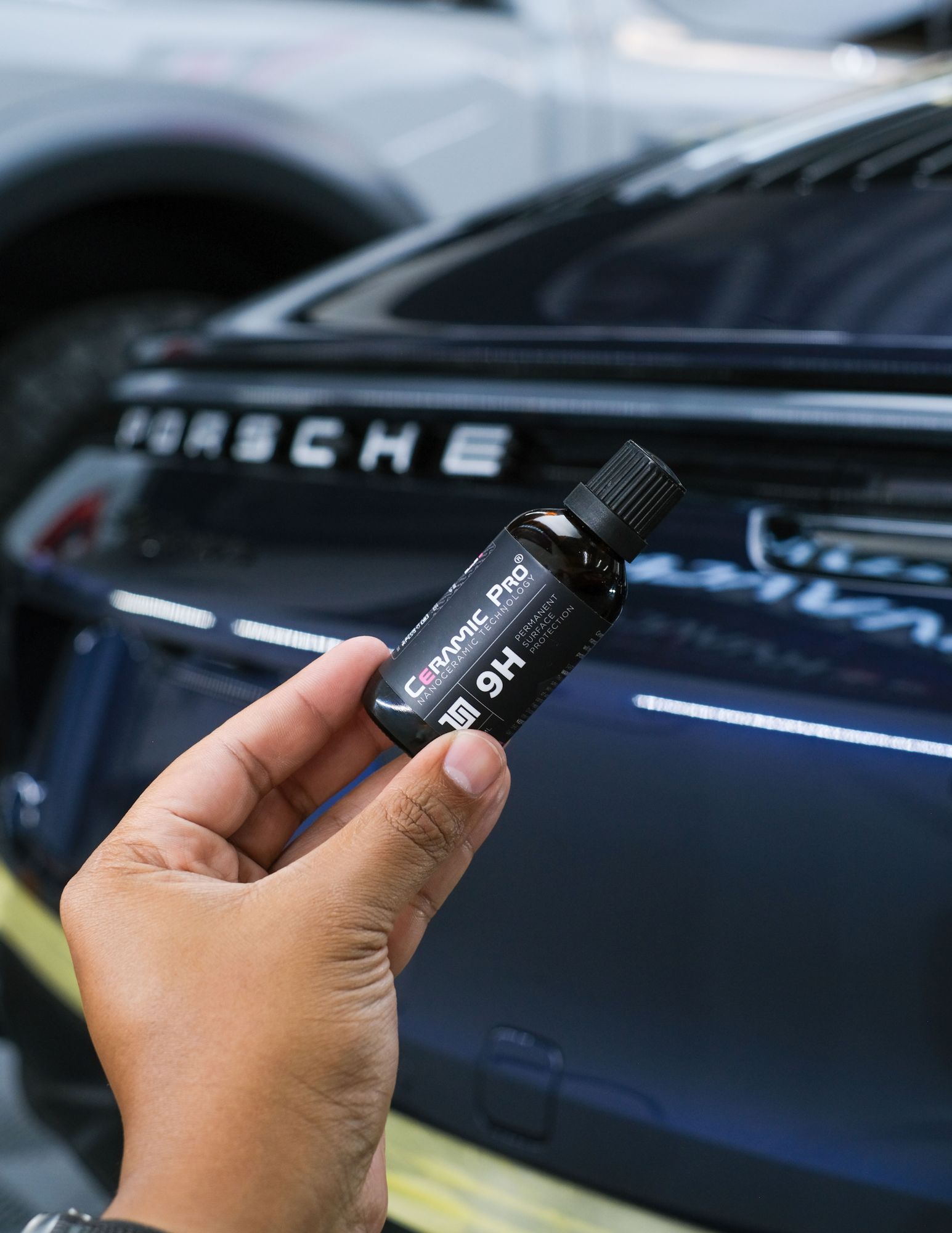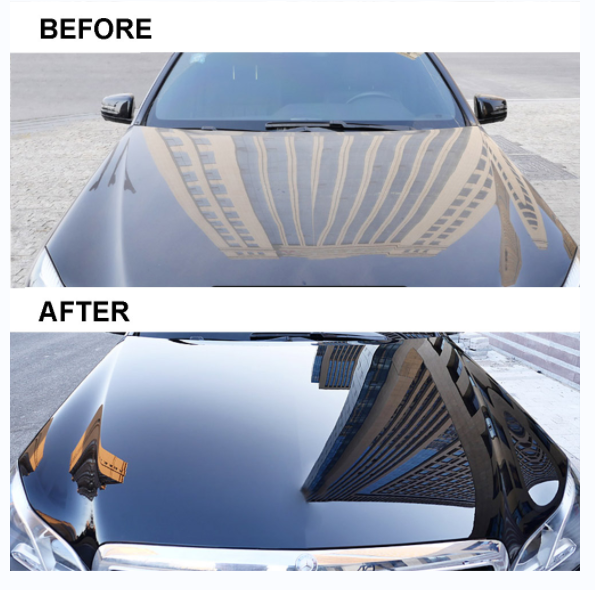Ceramic Finishing vs. Typical Wax: Which Gives Better Long-Term Security?
The dispute in between ceramic coatings and traditional wax for car protection has actually gathered considerable focus amongst automotive enthusiasts and professionals alike. While both serve the purpose of securing paint, their differences in durability, application, and long-lasting maintenance expenses may influence a customer's option. Ceramic coverings boast remarkable durability and resistance to environmental factors, yet the intricacy of their application increases inquiries concerning ease of access and usefulness. As we discover these contrasting options, it ends up being crucial to consider not only the prompt benefits however also the ramifications for lorry treatment with time.
Summary of Ceramic Coating
Ceramic layer has acquired significant appeal among auto lovers and detailers alike due to its sophisticated protective qualities. This innovative technology is created to produce a long lasting, hydrophobic shield over a lorry's paint surface area, dramatically enhancing its resistance to environmental pollutants such as dirt, UV rays, and chemical spots. Unlike conventional wax, which offers a temporary layer of protection, ceramic finishes bond at a molecular level with the paint, supplying durable durability-- typically extending beyond two years with proper upkeep.
The application procedure entails precise preparation of the automobile's surface, consisting of cleaning and polishing to ensure optimal bond. Once applied, the covering treatments to create a robust layer that not just adds depth and gloss to the paint however also streamlines upkeep. With its hydrophobic properties, ceramic finishing permits water and dust to slide off more easily, minimizing the regularity of washes and decreasing the risk of swirl marks.
Additionally, ceramic coverings are available in various formulas, permitting users to choose products customized to their certain requirements and choices. In general, ceramic finish stands for a substantial improvement in paint protection technology, delivering superior efficiency contrasted to conventional alternatives.
Review of Traditional Wax
Traditionally regarded as a staple in automotive treatment, wax works as a prominent option for those seeking a straightforward technique to improve and protect their car's paint - ceramic coating. Automotive wax commonly consists of natural ingredients, such as carnauba, or artificial compounds, made to produce a protective layer on the surface area of the paint. This layer not only enhances the lorry's gloss and beam but also provides an obstacle against ecological contaminants
The application of wax is typically user-friendly, making it obtainable for both professionals and Do it yourself lovers. Once used, wax requires a treating duration, after which it hardens to develop a safety covering.
However, while wax works for boosting the aesthetic allure of a vehicle, it is crucial to keep in mind that the protection it uses may demand much more constant reapplication compared to alternate items, such as ceramic finishings. Overall, conventional wax continues to be a popular option for those prioritizing convenience of use and prompt visual renovation.
Durability and Longevity Contrast
While both ceramic coverings and traditional wax deal protective benefits for automobile paint, their resilience and long life differ dramatically. Conventional wax, commonly made from natural carnauba or synthetic polymers, typically offers a protective layer that lasts around 3 to six months. This relatively brief lifespan requires normal reapplication to maintain ideal protection.
On the other hand, ceramic finishes are crafted from sophisticated nanotechnology, developing a covalent bond with the paint surface area. This results in a robust, hydrophobic layer that can sustain for 2 to 5 years, relying on the item and environmental problems. The premium longevity of ceramic coatings is credited to their chemical framework, which offers boosted resistance to scrapes, UV rays, and oxidation.

Defense Against Ecological Factors
Protecting an automobile's paint from ecological factors is critical for keeping its look and value over time. Vehicles are constantly subjected to a range of aspects, including UV rays, bird droppings, tree sap, acid rain, and road grime, every one of which can jeopardize the integrity of the paintwork.
Ceramic finishes offer a durable protection against these environmental aggressors. Unlike typical wax, which can break down promptly under UV exposure, ceramic finishings create a durable, hydrophobic layer that withstands the harmful impacts of sunshine and environmental contaminants. This innovative innovation develops a chemical bond with the vehicle's surface, using superior defense that lasts for several years, even in harsh problems.
In comparison, ceramic coatings maintain their safety high qualities longer, considerably reducing the risk of paint damages and making certain that the automobile maintains its aesthetic appeal. As an outcome, ceramic coatings are increasingly recognized as the premium selection for long-lasting security against ecological variables.
Application and Upkeep Differences
The methods of application and succeeding maintenance for ceramic finishings visit their website and conventional wax differ dramatically, impacting the overall customer experience and efficiency of each product. Ceramic coatings need a more complex application process, generally including surface preparation that consists of washing, sanitizing, and polishing the vehicle. When the surface prepares, the ceramic finish is applied in a regulated atmosphere, typically requiring specialist know-how to ensure appropriate healing and bonding to the paint.

While both products enhance car look, the longer-lasting defense provided by ceramic layers may validate their first financial investment, despite the more requiring application process. Alternatively, standard wax continues to be a popular option for those looking for a simpler, albeit temporary, remedy.

Final Thought
Finally, ceramic finishings demonstrate considerable advantages over conventional wax in regards to toughness and environmental management. With a lifespan extending two to 5 years and remarkable resistance to UV rays, dust, and chemical discolorations, ceramic layers provide a more effective service for long-lasting car maintenance. Although the application process may call for specialist knowledge, the resulting expense savings and decreased regularity of reapplication highlight the value of ceramic finishings for those looking for ideal vehicle protection.
The dispute in between ceramic layers and typical wax for car defense has garnered substantial interest among auto fanatics and specialists alike. Unlike standard wax, which offers a short-term layer of protection, ceramic coverings bond at a molecular level with the paint, supplying durable longevity-- frequently expanding beyond 2 years with proper maintenance.
While both ceramic coatings and standard wax deal protective benefits for automobile paint, their durability and longevity differ dramatically. For vehicle enthusiasts seeking long-term security, ceramic layers present a compelling advantage over typical wax products.
In final thought, ceramic coverings show substantial advantages over typical wax in terms of longevity and ecological defense.
Comments on “Protect Your Car from the Elements with Ceramic Coating Technology”